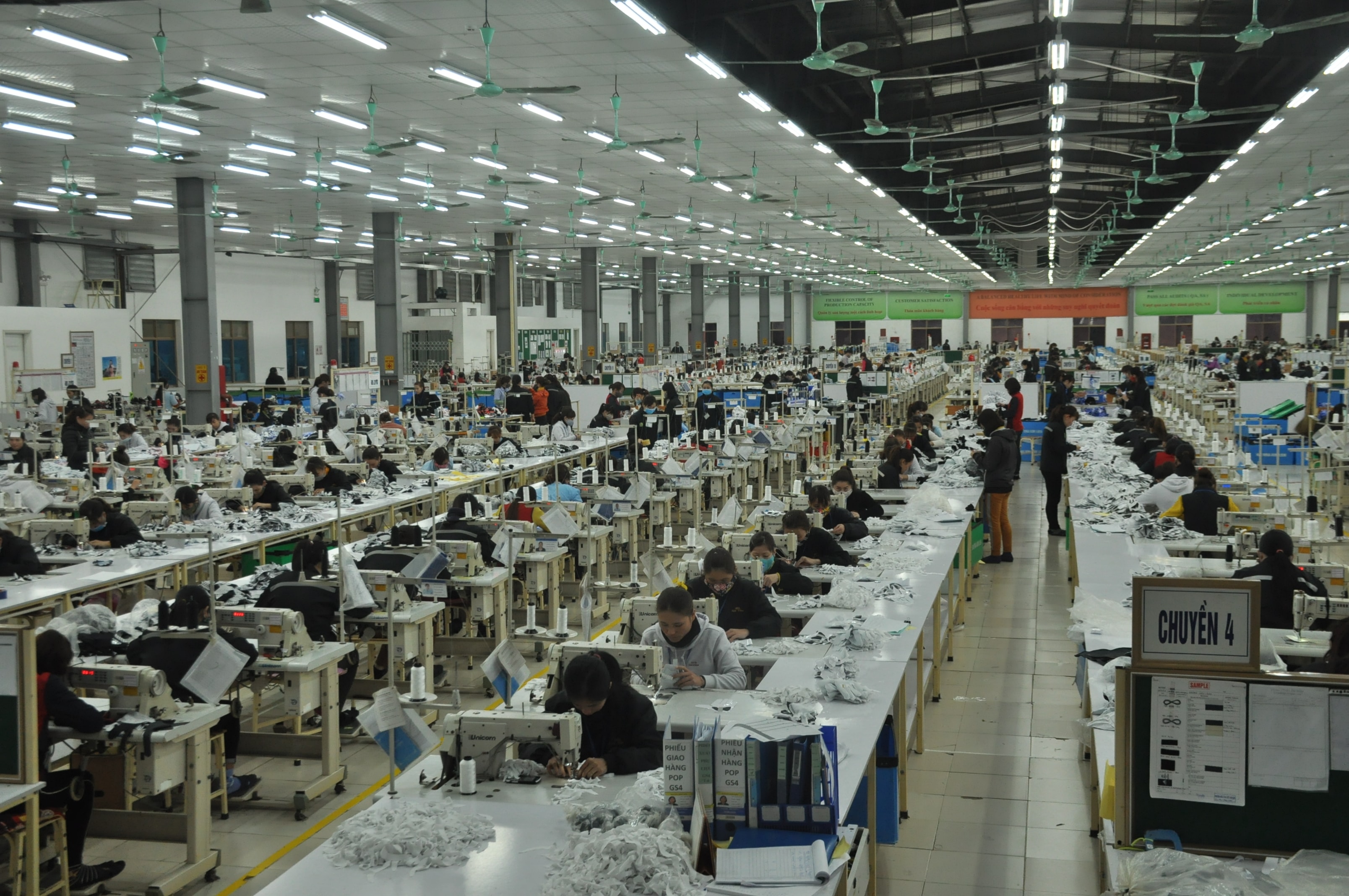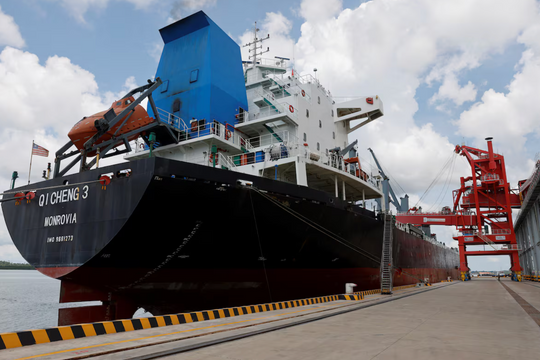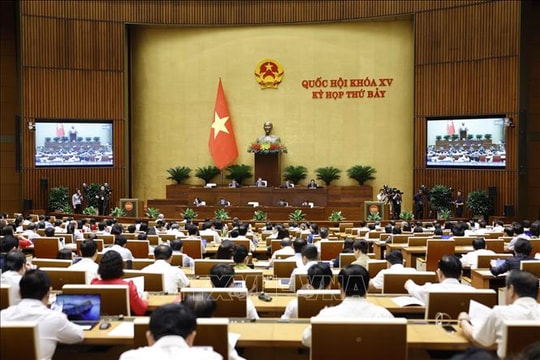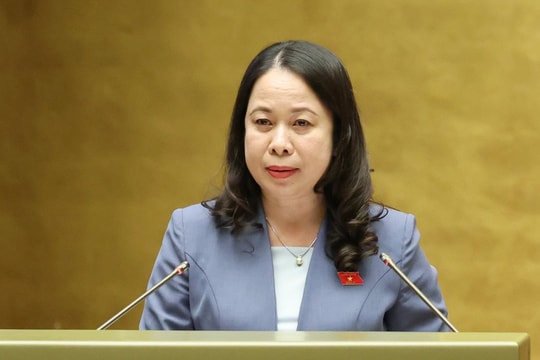Opportunities and challenges for businesses from CPTPP
The Comprehensive and Progressive Agreement for Trans-Pacific Partnership (CPTPP) was officially signed by 11 member countries including Australia, Brunei, Canada, Chile, Japan, Malaysia, Mexico, New Zealand, Peru, Singapore and Vietnam last week.
 |
| Produced at Haivina Kim Lien Textile Company (Nam Dan, Nghe An) Photo: Viet Phuong |
Experts and businesses in a number of industries are quite optimistic about the benefits that the agreement brings, but also believe that good preparation in terms of capacity and institutional reform is needed to seize opportunities and deal with new challenges and constraints.
Mr. Pham Xuan Hong, Vice President of Vietnam Textile and Apparel Association:
- CPTPP creates more favorable conditions for the textile and garment industry to export products to member markets and has a reverse impact on the acceleration of Vietnam's supporting industry, because the conditions on the origin of raw materials and goods are also stricter.
This year, Vietnam's textile and garment industry is expected to achieve an export turnover of 34 billion USD, higher than the figure of 31 billion USD in 2017. With the signing of CPTPP, the textile and garment industry from 2018 onwards will certainly not stop at the export growth figure of approximately 10% as before, but will have a breakthrough, exceeding this level.
In the textile sector, the proportion of textile export value to CPTPP markets accounts for about 13%, of which the largest market is Japan. However, such a rate is still low.
In my opinion, domestic enterprises that want to seize this opportunity must complete production stages, build more advanced and professional quality management systems, ensure labor safety in parallel with environmental protection and social welfare for workers. At the same time, it is necessary to have closer links in production stages between enterprises, because for a long time the linkage in the industry has been fragmented. This is a challenge but also an opportunity for textile and garment enterprises to improve themselves and step into a larger playing field, first of all, to increase the reputation of product quality with customers in 11 CPTPP member countries. On the contrary, the fact that textile and garment products of CPTPP member countries can easily enter Vietnam also promotes competitiveness for domestic manufacturers in terms of quality and price, and accordingly, consumers will benefit more, helping to make the domestic market healthier (reducing the phenomenon of counterfeit and fake goods).
Mr. Do Duy Thai, General Director of Viet Steel Company:
- In the context of the US market becoming more and more difficult when this country imposes a 25% tax on steel and 10% on aluminum, having favorable conditions to open up other markets is extremely important.
Viet Steel is continuing to research the potential for expansion into CPTPP member countries. The company has currently made a large investment in the factory to increase capacity by 500,000 tons/year, which began operating in early 2019, to export to the Canadian market. The investment in this new factory is a step to anticipate the Canadian market and will continue to explore other markets in the future.
Mr. Tran Viet Anh, Vice President of Ho Chi Minh City Rubber and Plastic Association:
- CPTPP member countries are considered potential markets for Vietnam's plastics industry. In particular, plastic products exported from Vietnam to some of these member countries have long had a 0% tax rate. Another advantage is the import of raw materials for the plastics industry. After CPTPP comes into effect, some specific raw materials of the plastics industry will have a deeply reduced tax rate when imported, creating favorable conditions for domestic plastic production.
However, the challenge when CPTPP comes into effect is that businesses from member countries will bring plastic products to Vietnam with superior quality and design, very competitive prices, and consumers will consider high-quality, global products.
Meanwhile, Vietnam's plastic products that meet global standards currently only account for about 30%, the remaining 70% serve the domestic market with not very high standards. Therefore, when CPTPP member countries such as Malaysia and Singapore have good plastic products brought to Vietnam, it will be an extremely big challenge for domestic plastic enterprises, forcing them to change soon. The change here is a large investment to develop product lines to meet the markets of CPTPP member countries first, especially large markets of the Vietnamese plastic industry such as Australia, Japan, New Zealand, Canada...
Mr. Takimoto Koji, Chief Representative of Japan External Trade Organization (JETRO) Office in Ho Chi Minh City:
- CPTPP will not have much impact on the relationship between the Japanese and Vietnamese markets because both countries have bilateral trade agreements. I think the tariff incentives in CPTPP will not be higher or will only be at a level close to that. However, with other markets such as Canada, Chile, Mexico, New Zealand, Peru... it will have a great impact on both Japanese and Japanese businesses investing in Vietnam.
Regarding investment, for many years, Japanese enterprises have always chosen Vietnam as one of the important investment countries. Notably, the current value of the Japanese yen will encourage Japanese enterprises to invest abroad and Vietnam will continue to be chosen because of its continuously improving investment environment, large population and deep integration in free trade with other countries. Of which, the most notable is the CPTPP that Vietnam has just signed.
Mr. Truong Dinh Hoe, General Secretary of Vietnam Association of Seafood Exporters and Producers (VASEP):
- Even without the US, CPTPP is still a comprehensive new generation agreement that will certainly impact most businesses in the industry and will be a driving force for institutional reform, thereby promoting better business operations.
Currently, most markets in the CPTPP bloc are importing Vietnamese seafood products, including large markets such as Japan, Canada... Many businesses expect to receive tax reductions when bringing products to these markets. However, seafood import taxes have long been relatively low, so tariffs are not a big problem for businesses in the industry.
I think the big benefit that seafood exporting enterprises receive is that through the common agreement of 11 countries, it will create fairness in standards and related issues such as environment, quality, social responsibility, workers... so that enterprises can continue to meet the requirements of better markets. Integrating with the world in a big playground also helps enterprises grow and become stronger, increasing their position. Through the common regulations and rules from the agreement, enterprises must improve to adapt to the big playground.
The advantage is that the Vietnamese seafood industry has long had a relatively “firm” position in the world market. The important thing for each enterprise, in my opinion, is to continue to maintain the export market, further improve quality, increase processing content, etc.
Mr. Nguyen Ngoc Nam, Acting General Director of Southern Food Corporation (Vinafood 2):
- For the rice industry, CPTPP will be a premise to expand the market and increase exports in the coming time. In addition, this is also an opportunity for businesses in particular and the rice industry in general to focus on handling issues related to technical barriers. However, how to handle it will have to wait because there are still no specific announcements in each field and each industry related to the implementation of this agreement.
To take advantage of the opportunity, in the immediate future, businesses and industries need to develop production strategies to improve food safety and hygiene. Because CPTPP member countries are developed countries with high demands on quality standards.
Mr. Dang Quoc Tuan, Deputy General Director of Viet Uc Seafood Corporation:
- For the seafood industry, CPTPP brings great advantages because among the 11 member countries, only Vietnam is the leader in exporting shrimp and some other seafood products such as tra fish.
When joining the bloc, countries in the bloc will support each other to develop their advantages, so countries outside the bloc will face significant limitations. For example, in exporting seafood to Japan, previously Ecuador, India, and Indonesia competed directly with Vietnam. But now, those countries are not in the bloc, while Vietnam is in the bloc, so the conditions for Vietnamese goods to enter Japan will be better.
Joining free trade agreements such as CPTPP, tariff barriers are lowered but technical barriers are raised. Therefore, product requirements will be more stringent, especially in terms of quality. Specifically, requirements such as production must ensure that it does not destroy the environment; ensure social factors, that is, it does not affect the lives of people around or must have positive solutions to help improve the lives of people around...
Mr. Nguyen Phuong Lam, Deputy Director in charge of Vietnam Chamber of Commerce and Industry (VCCI) Can Tho branch:
- CPTPP obliges Vietnam to reform its institutions. For example, the issue of labor use, trade unions where there are many forms established and workers are free to choose; intellectual property rights must be guaranteed and enforced; public investment and public debt must also be supervised; Government and local procurement must be public; corruption issues must be resolved...
The CPTPP brings great opportunities and challenges to the Vietnamese economy. The textile, garment and footwear industries continue to benefit from this agreement.
CPTPP also brings opportunities for agricultural products, including rice, fruits, and seafood, which are advantages and characteristics of the Mekong Delta. On the contrary, the livestock and industrial crop industries, which we do not have large-scale production, will have to face fierce competition and it is predicted that this industry will suffer serious damage, many farms will have to close when imported products are cheaper.
To take advantage of opportunities and deal with challenges, we do not have much time left. Because, after waiting for countries to approve and put into practice, if the scenario is as calculated, after two years from the time of signing, the agreement will come into effect.

Joining CPTPP, will Vietnamese people be able to buy cheap foreign milk?
When Vietnam joins CPTPP, import tax on dairy products from New Zealand, Singapore, and Japan will be reduced to 0%, which is an opportunity for consumers but a challenge for Vietnamese businesses.

Which economic sector benefits most when Vietnam joins CPTPP?
The World Bank (WB) has just released a research report assessing the impact of the Comprehensive and Progressive Agreement for Trans-Pacific Partnership (CPTPP, also known as TPP-11) on Vietnam's economy.
The flag is in the right hand to wave, but.... Over the past few years, the topic of TPP (Trans-Pacific Partnership Agreement) and CPTPP (Comprehensive and Progressive Agreement for Trans-Pacific Partnership) has been discussed quite a lot. So those who are prepared to seize the opportunity will be able to wave the flag when it comes to hand. Those who are not mentally prepared and have a specific plan will have to spend a lot of time researching, connecting and implementing combined with the “advantage of being a latecomer”. They may have missed the boat. That is a reality to understand the opportunity. On the other hand, understanding the reality of the challenge requires research, market survey and good advice. You cannot exploit the market by eavesdropping or by luck. For example, which goods and services have tax advantages? Which markets are still white areas with few competitors (from Vietnam or ASEAN which have similar production structures to ours, and competitors from other countries)? Who can cooperate partially, partially or completely in the supply chain and value chain? These are basic questions. Specifically, opportunities come to textiles and footwear, two industries with a very large labor force; opportunities for the seafood, food, beverage, and agricultural industries: ocean tuna to Japan, rice to Mexico (the import tax on Vietnamese rice, currently 20%), will be eliminated; public procurement of goods and services... Currently, Vietnamese exports to CPTPP countries are subject to an average tax rate of 1.7%. If this rate drops to 0% within 7-10 years, the benefits Vietnam will gain from this agreement will be relatively clear. The four markets of Canada, Mexico, Peru and Chile will open their doors for Vietnamese goods to move from the West Coast of America to the East Coast with 12 other countries, especially Brazil (203 million people) and Argentina (43 million people) which are taking up a very large market share of corn exports to Vietnam. If the future has EVFTA (Vietnam - EU Free Trade Agreement), it will be great, because agreements like this will help Vietnam change and perfect its market economic mechanism to integrate with the world, limiting narrow-minded protectionist thinking. However, despite the recent market opening, logistics remains a major challenge for all parties. Whoever designs a structured sales network and distribution channel, produces quality products at reasonable prices (to create a strong and beloved brand), will win. Conversely, whoever takes care of the brand but neglects quality and logistics in a broader sense, will fail. Nguyen Thanh Lam |




